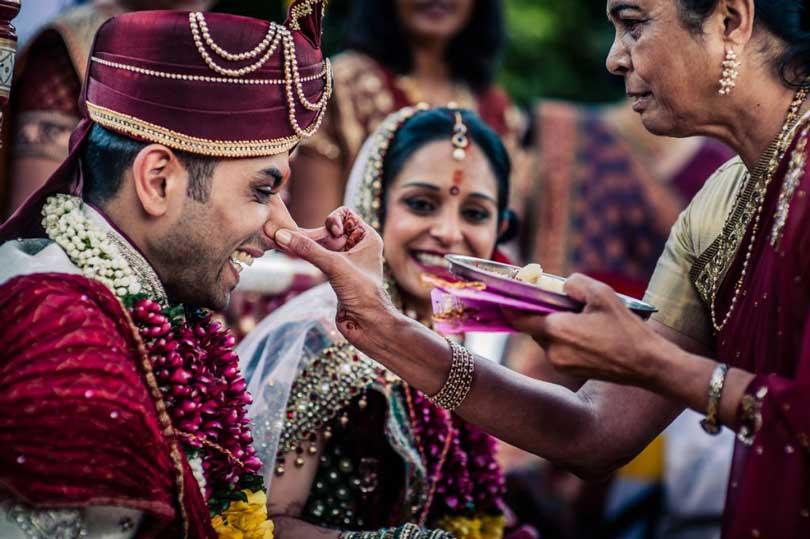Reply To:
Name - Reply Comment

 By Zara Mandviwalla Akbarally
By Zara Mandviwalla Akbarally
The institution of marriage is one that has evolved and transformed over the course of centuries, shaped by differing cultures and norms. South Asian culture, specifically India and Pakistan, is skewed towards patrilocal marriages which is influenced by traditional gender roles and family dynamics prioritizing the husband’s family values and traditions - after all, it is the bride who is joining his family, and therefore must adhere to their ‘way of life’, adapting and adjusting to their new household and responsibilities both in the urban and rural areas, at times at the cost of her own agency. It is most interesting to observe the minority group, that is the Moor families (Muslim community) in the Eastern Province of Sri Lanka combatting these age-old perceptions of what marriage should be.
Tale as old as time
While variations exist, in Indian and Pakistani households, girls may be raised with the understanding that leaving their parents' home and transitioning to their husband's family is a societal norm and an expected part of the marriage process. This is a “tale as old as time” amongst families in South Asia, where there is a “Rukhsathi” or “Vidaai” (departure of the bride from her parental home), followed by tears and saddened goodbyes as a father gives away the apple of his eye to another family. This emotional occasion is the official parting for the girl from her near and dear ones.
When the living arrangements are reversed in these Indian and Pakistani households, the term “ghar jamai,” is used where the husband moves into his wife's family home after marriage instead of establishing a separate household and there is a negative connotation to this. This term is considered derogatory and implies dependency, emasculation, or a lack of independence on the part of the son-in-law in these societies.
Switching things up
On the other hand, it is most interesting to notice the pattern of matrilocal marriages among Moor families in Sri Lanka, where ‘daddy’s little girl’ never has to leave, which seems to ensure emotional and practical support for the newlyweds. When asked why the husband moves into the wife’s family home or community after marriage, these Sri Lankan Moors say “Practicality.” The Moor Men seem to be aware of the delicate yet dynamic relationship of mother-in-law and daughter-in-law, maneuvering it in such a way that the couple live harmoniously with the wife’s family during the formative phase of their lives.
While the origins of this cultural practice are unknown, traditionally, the men of the Moor community in Sri Lanka may have moved into the wife’s family house, where the wife’s family possessed property, land or resources making it more practical for the couple to move into the wife's house. This may also be a way to honor and maintain the heritage and history of the wife's family.
In certain areas in Sri Lanka such as in Beruwala, Puttalam, Galle, Aluthgama and Maggona, this living arrangement is customary and provides the couple with access to the wife's family's property or inheritance and is typically observed in families where there is only one daughter. This not only ensures the preservation of family wealth within the wife’s lineage but also enables daughters to remain in close proximity to their aging parents. Many also seem to believe that women are more likely to pass down cultural values and living in a matrilocal arrangement allows for cultural continuity within families.
The origins of Kandyan law in Sri Lanka dating back to the Sinhalese monarchy in Kandy also accepted "Binna marriage," where the groom is received into the house of the bride, following a matrilocal marriage system, however, this may not necessarily reflect the current prevalent marriage practices in Sri Lanka today.
What can we learn from the Sri Lankan Moors
It is refreshing to see that the present-day Sri Lankan Moor community are not averse to their ancestor’s tradition of matrilocal marriages and continue to carry on the tradition which ensures that the new bride has the continued emotional support of her own family during various life events including childbirth and child-rearing. The Sri Lankan Moors seem to be breaking the traditional gender roles and power dynamics seen in the rest of South Asia where the women are required to integrate into the husband’s family after marriage. This cultural practice of matrilocal marriages in Sri Lanka appears to foster a more equitable and balanced dynamic within the families, by alleviating the pressures and responsibilities associated with household chores and domestic tasks that are expected of new brides in their husband’s family homes in South Asia.
Today families may strive for a more balanced and collaborative approach to a wedding and the expectations from “the girl’s side” or “larkiwallay,” which is the term used in South Asian cultures that refers to the bride’s family or relatives, is constantly changing. It appears that the bride’s side may have greater or equal involvement as the groom’s side in relation to decision-making, where the bride’s desires are taken into account in these minority communities within Sri Lanka.
Muslim families and other societies around the world should look to the example created by the Sri Lankan Moors where there is no right or wrong way of living after marriage, and this decision should be based on personal preferences and mutual decisions within families rather than adhering to the age-old societal expectation and/or norm for girls to leave their parents' home. The societal expectations placed on the dutiful wife and daughter-in-law, is certainly not universal, as seen in certain homes in Sri Lanka. Perhaps this is due to the multiple societies co-existing on this little island, which has led to diversity and in turn a more “practical” way of living. Sri Lanka has often been likened to a colorful mosaic, where different cultures and societies co-exist beautifully.